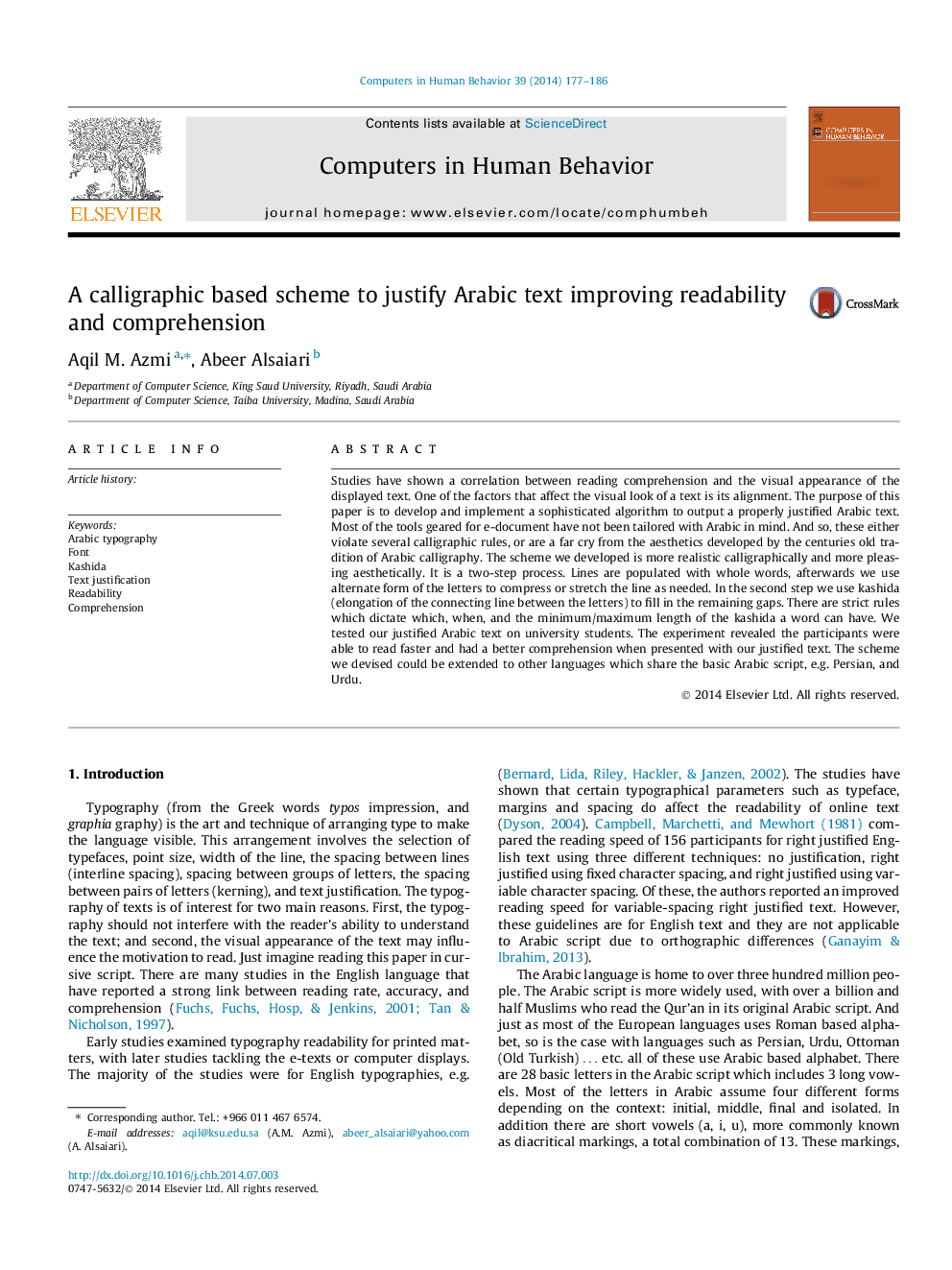| Article ID | Journal | Published Year | Pages | File Type |
|---|---|---|---|---|
| 6838805 | Computers in Human Behavior | 2014 | 10 Pages |
Abstract
Studies have shown a correlation between reading comprehension and the visual appearance of the displayed text. One of the factors that affect the visual look of a text is its alignment. The purpose of this paper is to develop and implement a sophisticated algorithm to output a properly justified Arabic text. Most of the tools geared for e-document have not been tailored with Arabic in mind. And so, these either violate several calligraphic rules, or are a far cry from the aesthetics developed by the centuries old tradition of Arabic calligraphy. The scheme we developed is more realistic calligraphically and more pleasing aesthetically. It is a two-step process. Lines are populated with whole words, afterwards we use alternate form of the letters to compress or stretch the line as needed. In the second step we use kashida (elongation of the connecting line between the letters) to fill in the remaining gaps. There are strict rules which dictate which, when, and the minimum/maximum length of the kashida a word can have. We tested our justified Arabic text on university students. The experiment revealed the participants were able to read faster and had a better comprehension when presented with our justified text. The scheme we devised could be extended to other languages which share the basic Arabic script, e.g. Persian, and Urdu.
Keywords
Related Topics
Physical Sciences and Engineering
Computer Science
Computer Science Applications
Authors
Aqil M. Azmi, Abeer Alsaiari,
